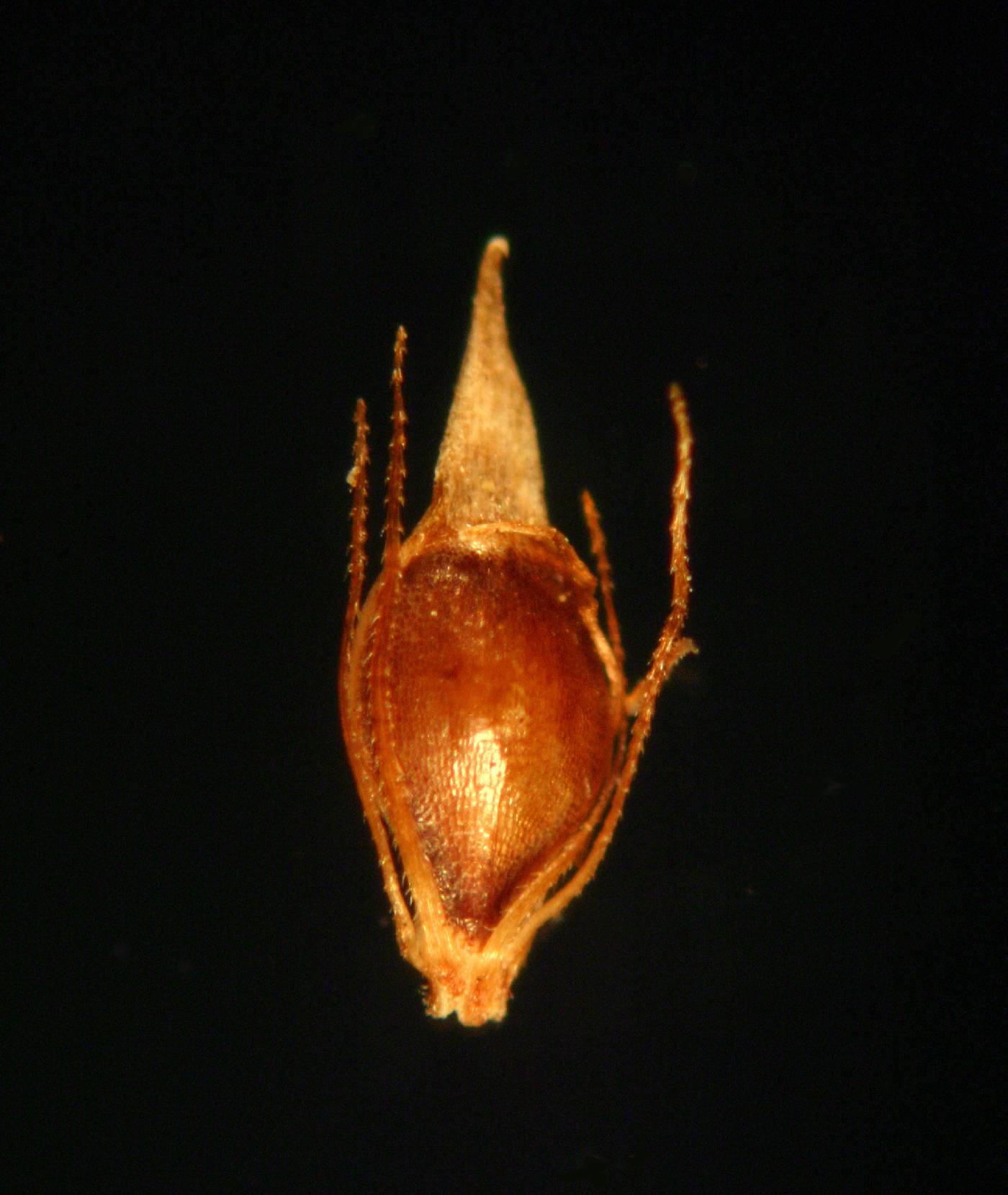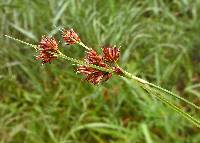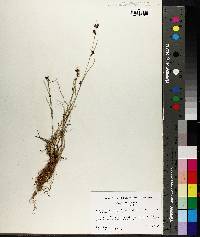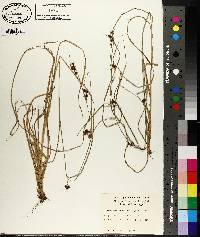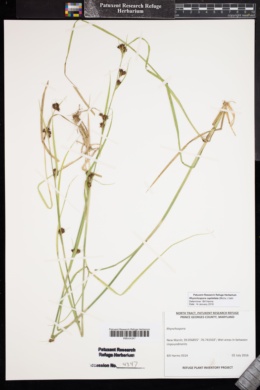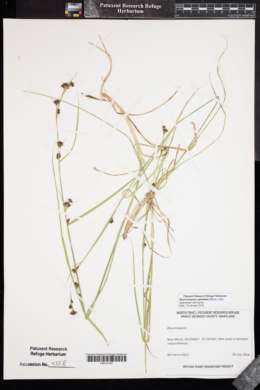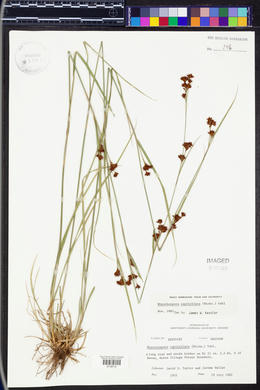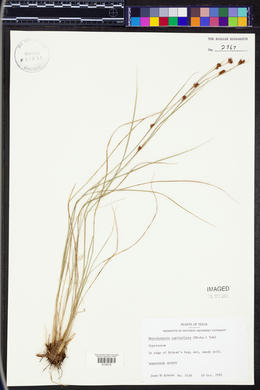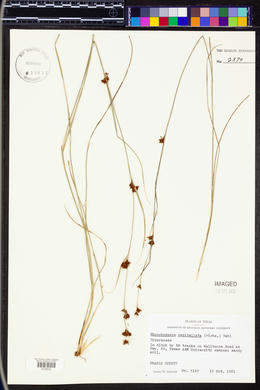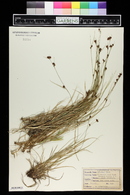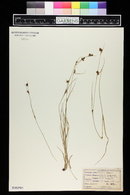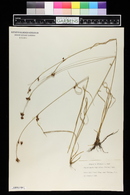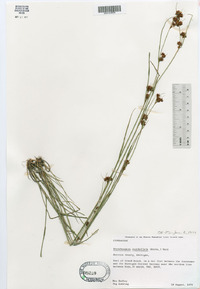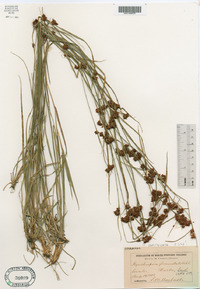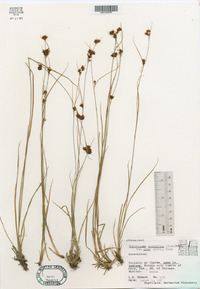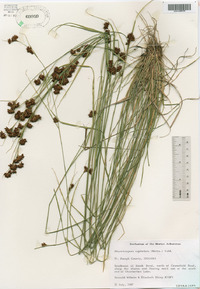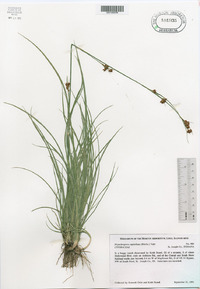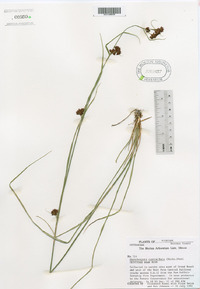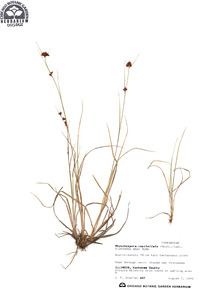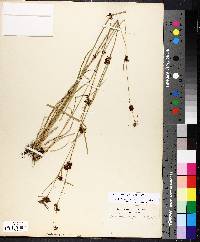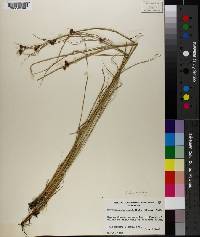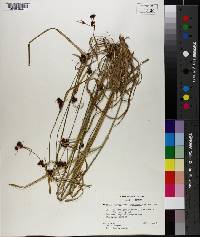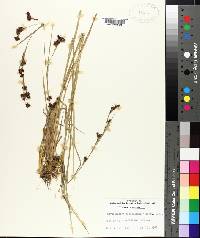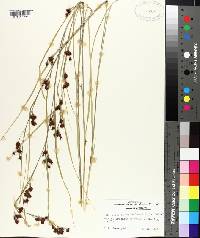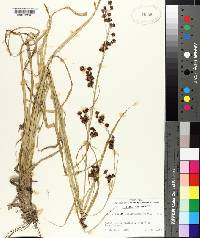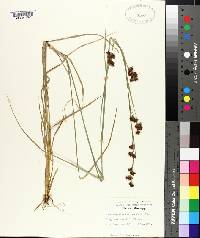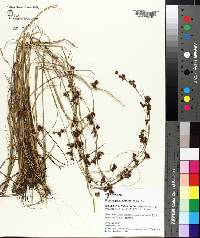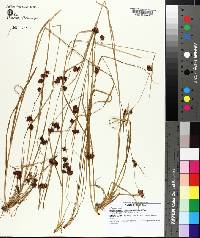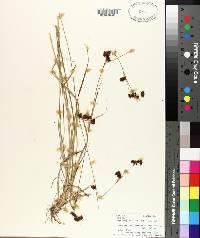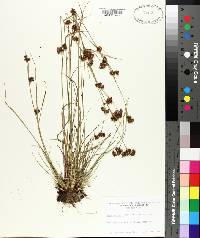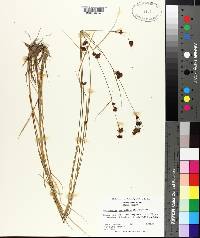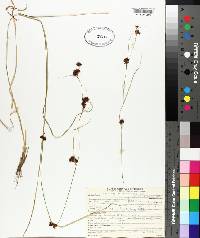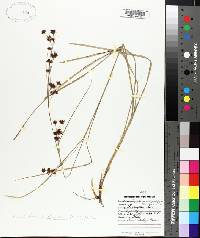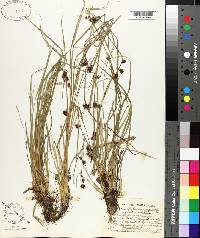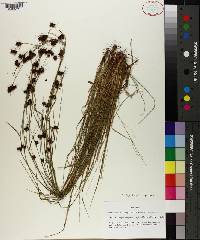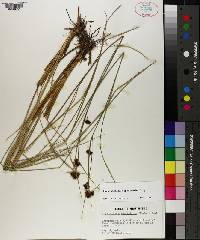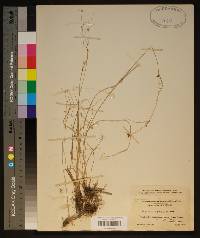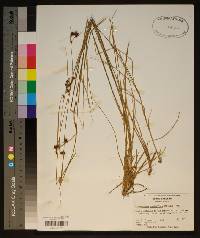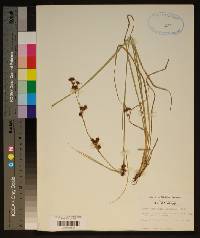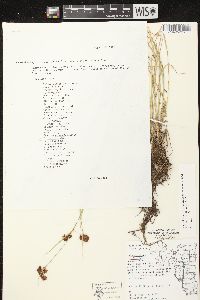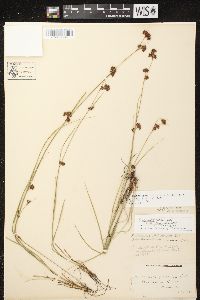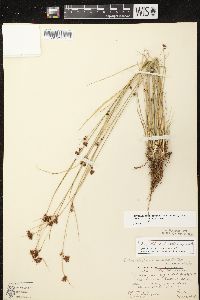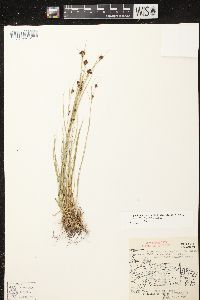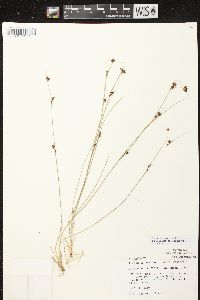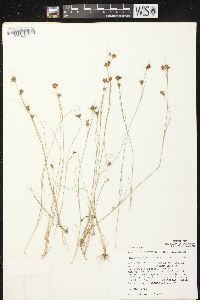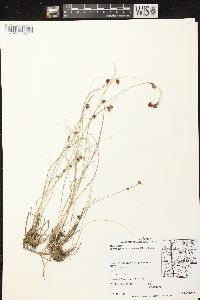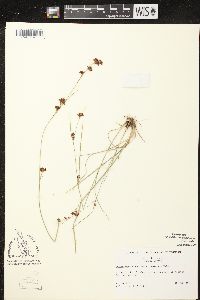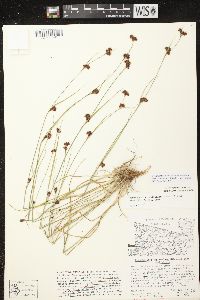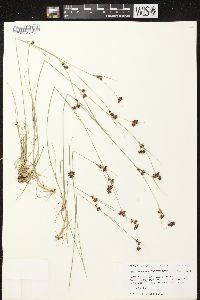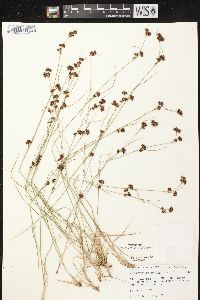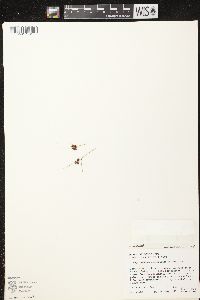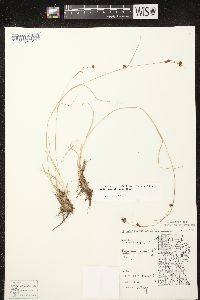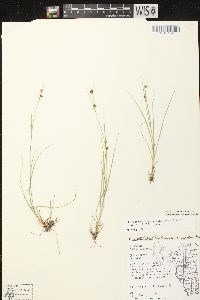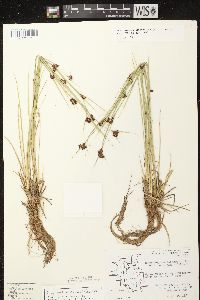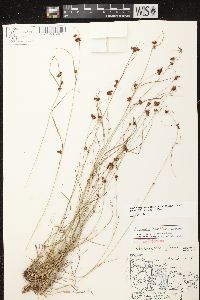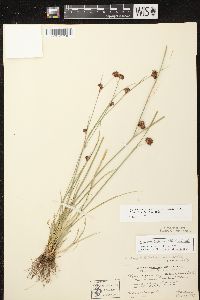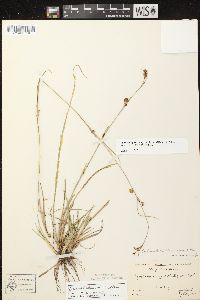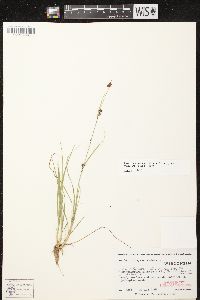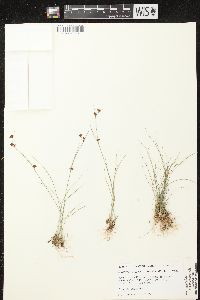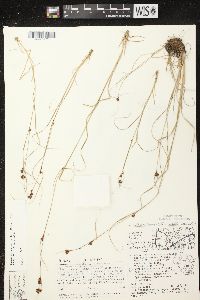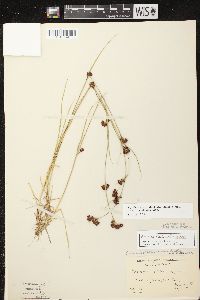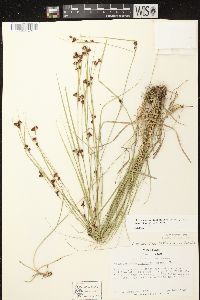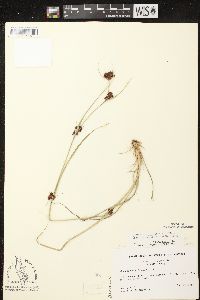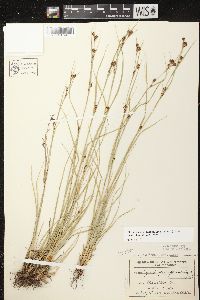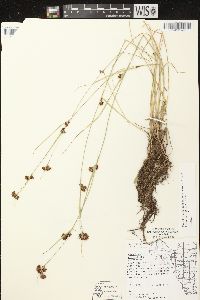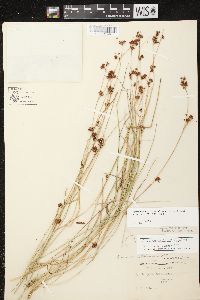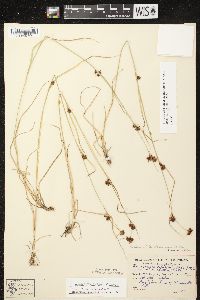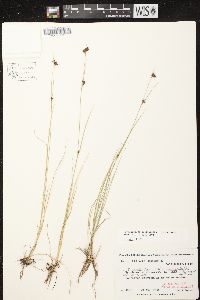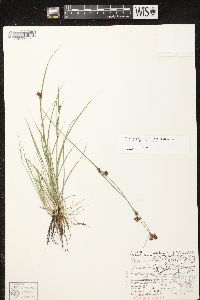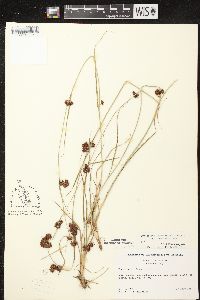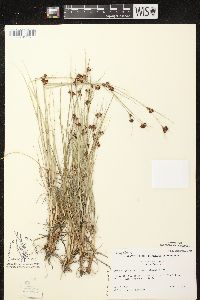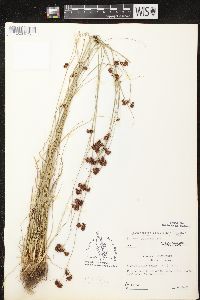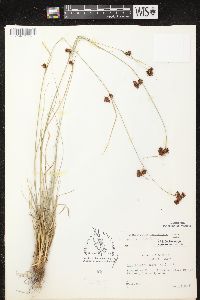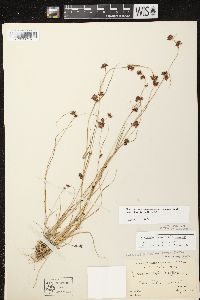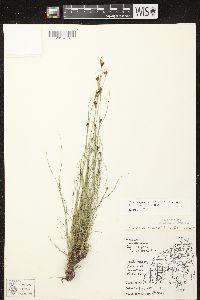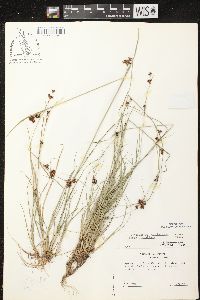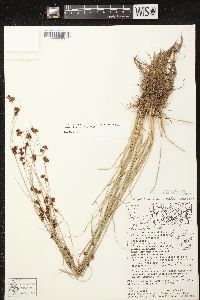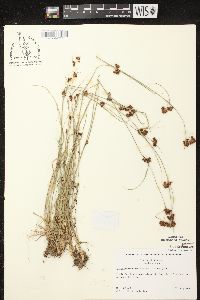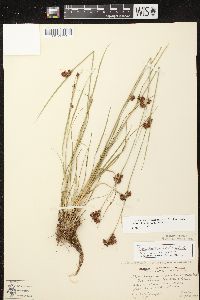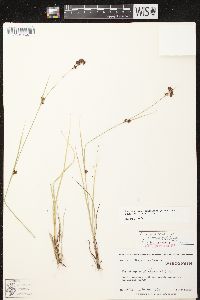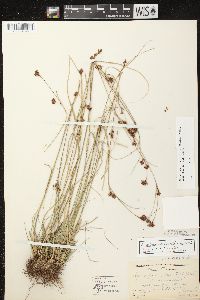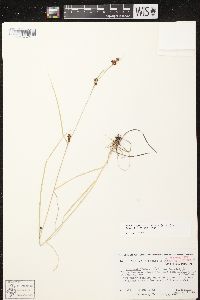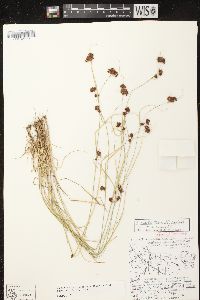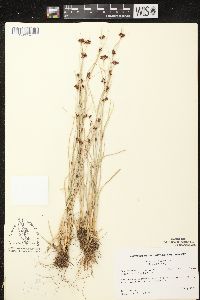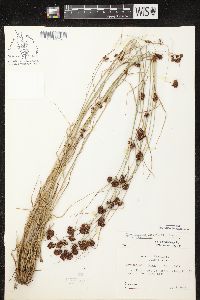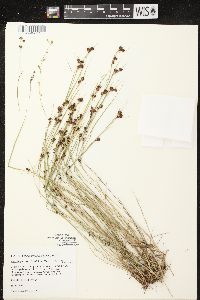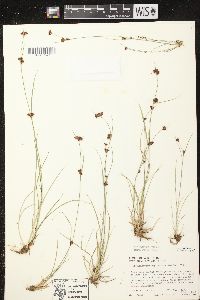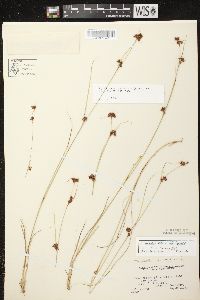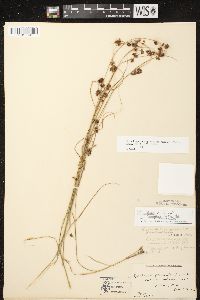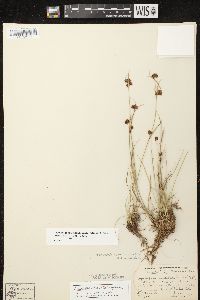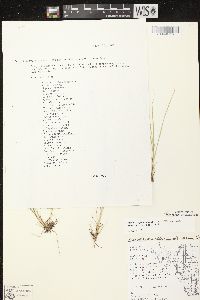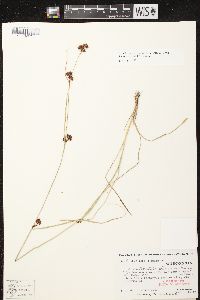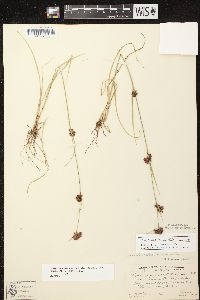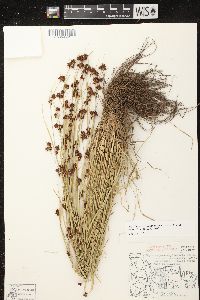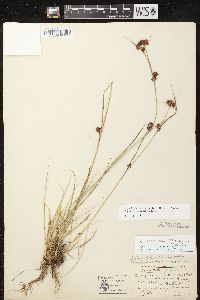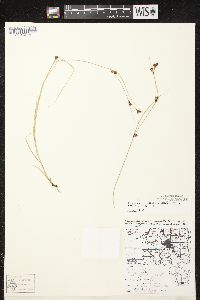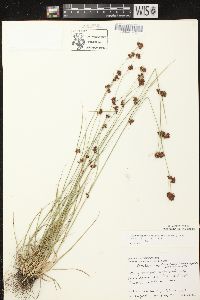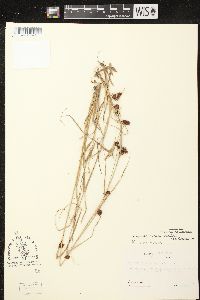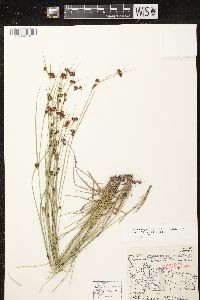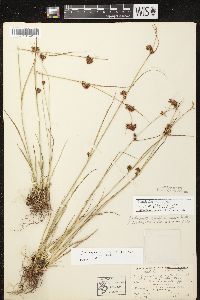Rhynchospora capitellata
|
|
|
|
Family: Cyperaceae
Brownish Beak Sedge, more...brownish beaksedge, brownish beakrush
[Rhynchospora capitellata f. controversa (S.F.Blake) Gale, moreRhynchospora capitellata f. discutiens (C.B. Clarke ex Britton) Gale, Rhynchospora capitellata var. controversa S.F.Blake, Rhynchospora capitellata var. minor] |
Plants perennial, cespitose, 20-100 cm; rhizomes absent. Culms arching-ascending, leafy, obtusely trigonous, slender; principal leaves overtopped by inflorescence; blades flat, to 3 mm, apex tapering, trigonous. Inflorescences terminal and axillary, clusters 1-5 or more, compact, turbinate or hemispheric, 1-1.5 cm wide; peduncles progressively shorter distally on culm; bracteal leaves mostly exceeding subtended compounds. Spikelets rich deep brown, rarely pale brown, lance ellipsoid, 3.5-4(-5) mm; fertile scale elliptic, 2.7-3 mm, apex acute or rounded, midrib short excurrent or not. Flowers: perianth absent. Fruits (1-)2-3(-5) per spikelet, (2-)2.5-3 mm; body red brown with pale central disc, stipitate, lenticular, obovoid, 1.2-1.5 × 0.7-1(-1.2) mm, margins pale, wirelike, surfaces slick; tubercle triangular-subulate, (0.8-)1-1.2(-1.6) mm. Fruiting summer-fall. Moist to wet meadows, swales, seeps, stream banks, flatwoods, fens, and bogs; 0-1600 m; N.B., N.S., Ont., Que.; Ala., Ark., Calif., Conn., Del., D.C., Fla., Ga., Ill., Ind., Kans., Ky., La., Maine, Md., Mass., Mich., Minn., Miss., Mo., N.H., N.J., N.Y., N.C., Ohio, Oreg., Pa., R.I., S.C., Tenn., Tex., Vt., Va., W.Va., Wis. Rhynchospora capitellata occurs infrequently in the lower Gulf coastal plain (in Florida, only north) and intergrades with R. glomerata. Forms with antrorsely barbellate bristles are referred to forma controversa (S. F. Blake) Gale; those with smooth bristles are named forma discutiens (C. B. Clarke) Gale (S. Gale 1944). Occasional forms with trigonous fruits occur. Bruce Sorrie (pers. comm.) believes that many of the southern coastal plain records for Rhynchospora capitellata are based on examples of a neglected taxon, R. leptocarpa (Chapman) Small (J. K. Small 1933), and he wishes to reinstate it. Occurring in semi-shady moist sites in steepheads, or from seeps and shallows along blackwater streams, the plants are mostly distinguished by the tall, lax habit; the many distant, small clusters of light brown or tan spikelets; and the softer, more lax foliage. Measures of spikelets, fertile scales, perianth, achenes, and fruit tubercles show a strong overlap with those of southern examples of R. capitellata. The long, lax culm habit, the softer and paler foliage, and the paler spikelets could well be ecologic responses, or the plants could indeed represent a geographic variant.
Perennial herb, tufted 20 cm - 1 m tall Leaves: alternate, three-ranked, 1.5 - 3.5 mm wide, flat, becoming three-angled, linear with a tapering tip, parallel-veined, with a sheathing base that encloses the stem. Sheaths opening at the top. Inflorescence: a compact head of one to five spikelet clusters, terminal or axillary, overtopping leaves, 1 - 1.5 cm wide, reverse cone-shaped to hemispheric, subtended by leaf-like bracts. Bracts mostly surpassing the inflorescence. Flowers: minute, subtended by a floral scale, lacking sepals and petals, bearing six bristles. Bristles 2 - 3 mm long, equal to or slightly shorter than the achene tubercle. Stamens exserted. Pistil one. Style two-cleft. Fruit: a one-seeded achene, two to five per spikelet, stalked, dark brown to reddish brown with a pale central disc, 1 - 1.5 mm long (not including tubercle), about 1 mm wide, reverse egg-shaped, biconvex, plump, slick-surfaced, with narrowly raised margins. Tubercle to about 1.5 mm long, triangular to awl-shaped. Culm: ascending and arching, 20 cm - 1 m long, thin, bluntly three-sided, solid, leafy. Spikelets: rich dark brown, 3.5 - 5 mm long, lance-shaped to ellipsoid, with mostly two to five flowers. Floral scales spirally arranged and overlapping, about 3 mm long, elliptic with a rounded pointed apex. Similar species: No information at this time. Flowering: mid-June to mid-September Habitat and ecology: Locally frequent in boggy areas. Also found in other moist habitats. Occurence in the Chicago region: native Etymology: Rhynchospora comes from the Greek words rhynchus, meaning beak, and spora, meaning seed, referring to the beaked achene. Capitellata means "with small heads." Author: The Morton Arboretum Erect, cespitose perennial 3-8 dm; lvs flat, 1.5-3.5 mm wide; glomerules 2-several, loosely turbinate or hemispheric, the terminal to 1.5 cm thick, the lateral somewhat smaller, often on paired or branched peduncles; spikelets 3.5-5 mm, castaneous, with mostly 2-5 fls and frs; bristles 6, 1.8-2.8 mm, usually retrorsely barbellate, about equaling or a little shorter than the tubercle; achenes plump, pyriform-obovate, 1.2-1.8 mm, two-thirds as wide, with narrowly raised margins and without a prominent umbo, smooth, ±uniformly dark brown; tubercle 0.8-1.6 mm, much widened at base. Bogs and wet sands; N.S. to Ont., Mich., and Mo., s. to Fla. and Tex.; Pacific coast. Gleason, Henry A. & Cronquist, Arthur J. 1991. Manual of vascular plants of northeastern United States and adjacent Canada. lxxv + 910 pp. ©The New York Botanical Garden. All rights reserved. Used by permission. From Flora of Indiana (1940) by Charles C. Deam Infrequent in wet or moist sedge borders of lakes and in interdunal flats. This is our most common species of this genus and at a short distance it might be confused with Cladium mariscoides but the latter is much stiffer in habit. …… Indiana Coefficient of Conservatism: C = 6 Wetland Indicator Status: OBL |

